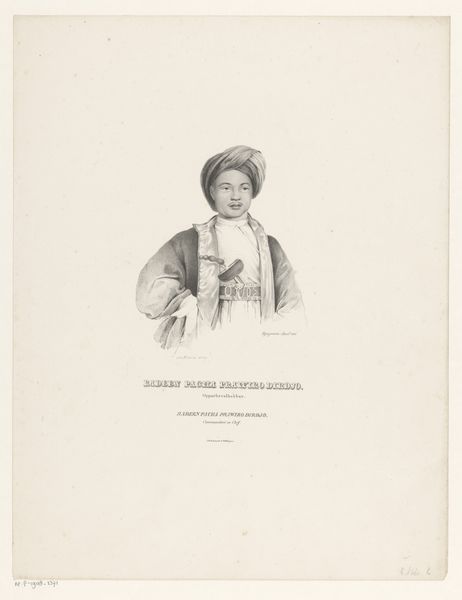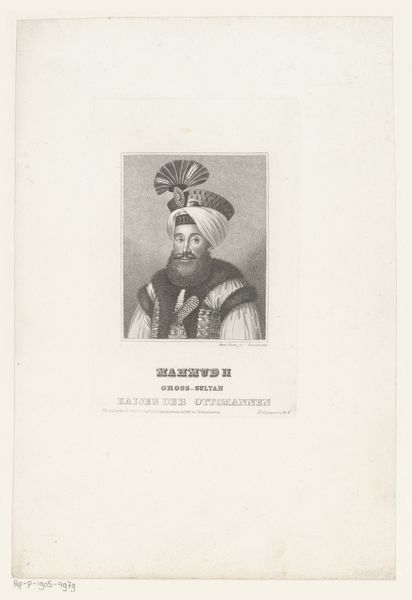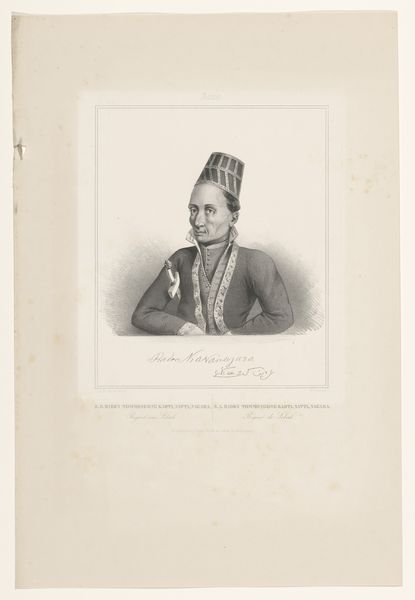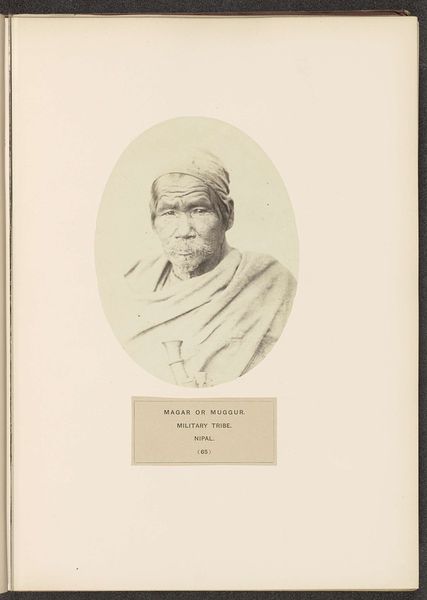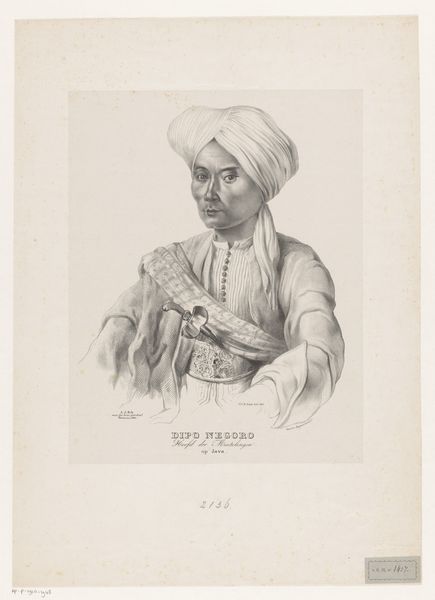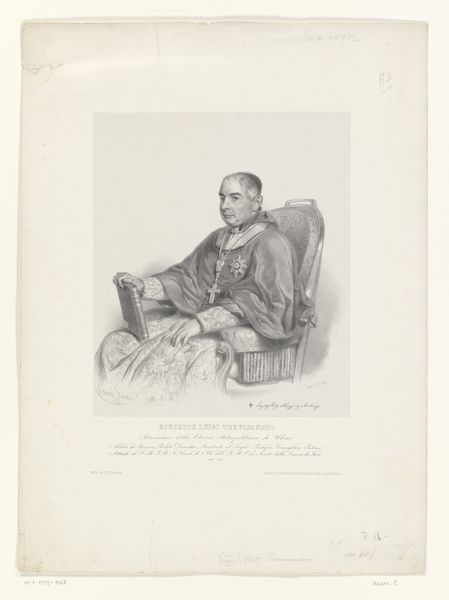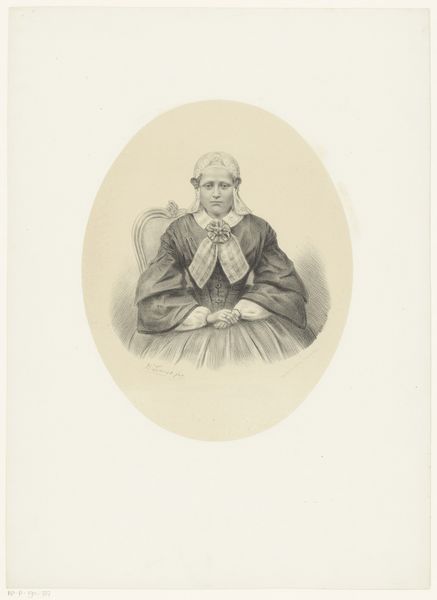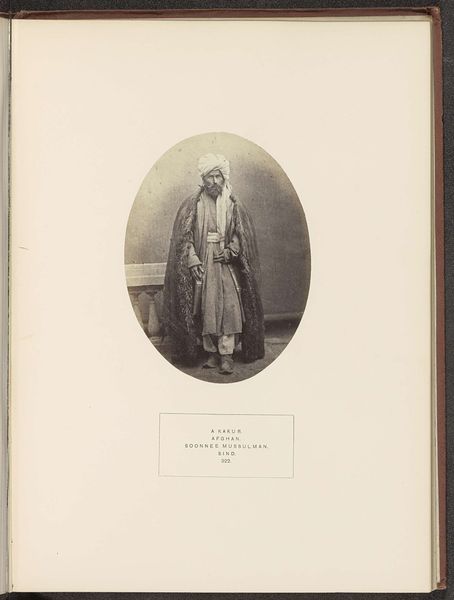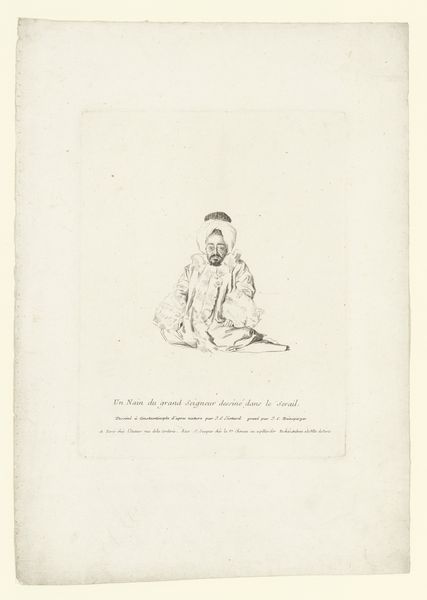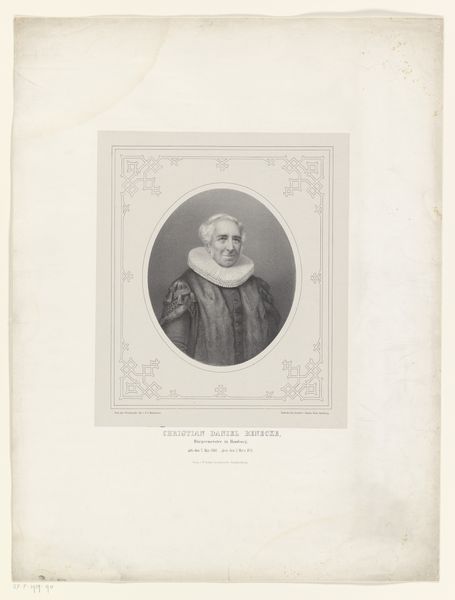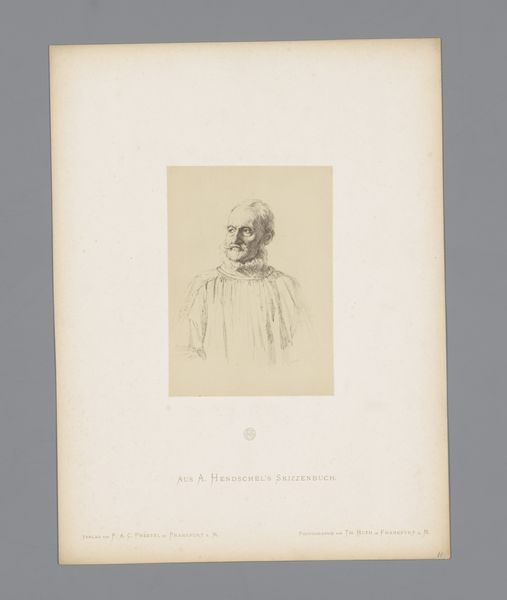
drawing, lithograph, print, pencil
#
portrait
#
pencil drawn
#
drawing
#
lithograph
# print
#
pencil sketch
#
indigenism
#
pencil drawing
#
geometric
#
pencil
Dimensions: height 435 mm, width 335 mm
Copyright: Rijks Museum: Open Domain
This is Jean Augustin Daiwaille’s portrait of Diepo Negoro, made in the 19th century using lithography. Lithography is a printmaking technique that relies on the chemical repulsion between oil and water. Here, the artist would have drawn on a flat stone with a greasy crayon, then treated the stone so that ink would only adhere to the drawn areas. This process allowed for relatively quick and easy reproduction, aligning with the rise of mass media in the 19th century. The resulting print captures Diepo Negoro's likeness with remarkable detail, from the folds of his turban to the subtle shading of his face. But what does it mean to reproduce someone's image through this industrial process? It democratizes representation, but also potentially commodifies it, turning a person into an object for consumption. Considering the materials and processes used, we can see how this work reflects broader social and economic forces at play during its time. It is a reminder of how deeply intertwined art, labor, and politics really are.
Comments
No comments
Be the first to comment and join the conversation on the ultimate creative platform.
